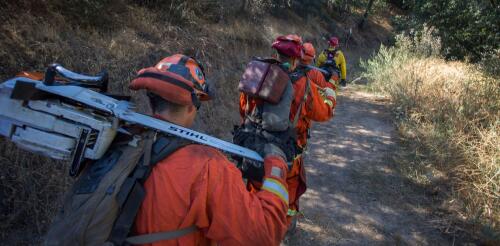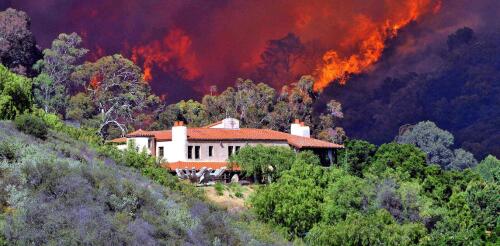Firefighters
If you call 911 in rural Georgia, the nearest emergency responders might come from the local prison. In 1963, the Georgia Department of Corrections began a program to train incarcerated people as firefighters to support not only their prisons, but also the surrounding communities. Over time, the program has grown dramatically. Today, prison fire teams from 19 Georgia state prisons, including a women’s prison, and six county prisons are trained in firefighting and emergency medical response. The crews respond to motor vehicle accidents, structure fires, brush fires, hazardous materials incidents and search and rescue efforts, among other emergencies – all without being paid a salary. Jackson County, Georgia, describes incarcerated firefighters as responding to “every structural fire in Jackson County, where they serve as manpower support to every Fire Department on scene.” The all-female firefighting crew at Lee Arrendale Stat...
Humans have learned to fear wildfire. It can destroy communities, torch pristine forests and choke even faraway cities with toxic smoke. Wildfire is scary for good reason, and over a century of fire suppression efforts has conditioned people to expect wildland firefighters to snuff it out. But as journalist Nick Mott and I explore our new book, “This Is Wildfire: How to Protect Your Home, Yourself, and Your Community in the Age of Heat,” and in our podcast “Fireline,” this expectation and the approach to wildfire will have to change. Over time, extensive fire suppression has set the stage for the increasingly destructive wildfires we see today. The problem with fighting every fire The way the U.S. deals with wildfires today dates back to around 1910, when the Great Burn torched some 3 million acres across Washington, Idaho, Montana and British Columbia. After watching the fire’s swift and unstoppable spread, the fledgling Forest Service developed...
For three weeks in July, the world’s most elite bike racers climb steep mountains and sprint along historic cobblestones to capture the coveted yellow jersey or the race leader in the Tour de France. It’s a 21-day feat of human endurance that requires constant eating and drinking to manage the average daily energy demand of about 6,000 calories, equivalent to around 12 McDonald’s Happy Meals, and just over 1.5 gallons of water. Nearly 5,000 miles away in the mountains of North America, radios crackle with chatter from a wildfire incident command post, air operations and other crews fighting a wildfire. Up the fireline, the swings of Pulaskis, axlike hand tools, are carving a fuel break into the land. The weather forecast predicts a high of nearly 100 degrees Fahrenheit (38 C) with wind, a combination that can push the fire high up into the canopy of dense lodgepole pines on the mountainside. The yellow jerseys here are sooty, sweat-stained and flame-resistant...


